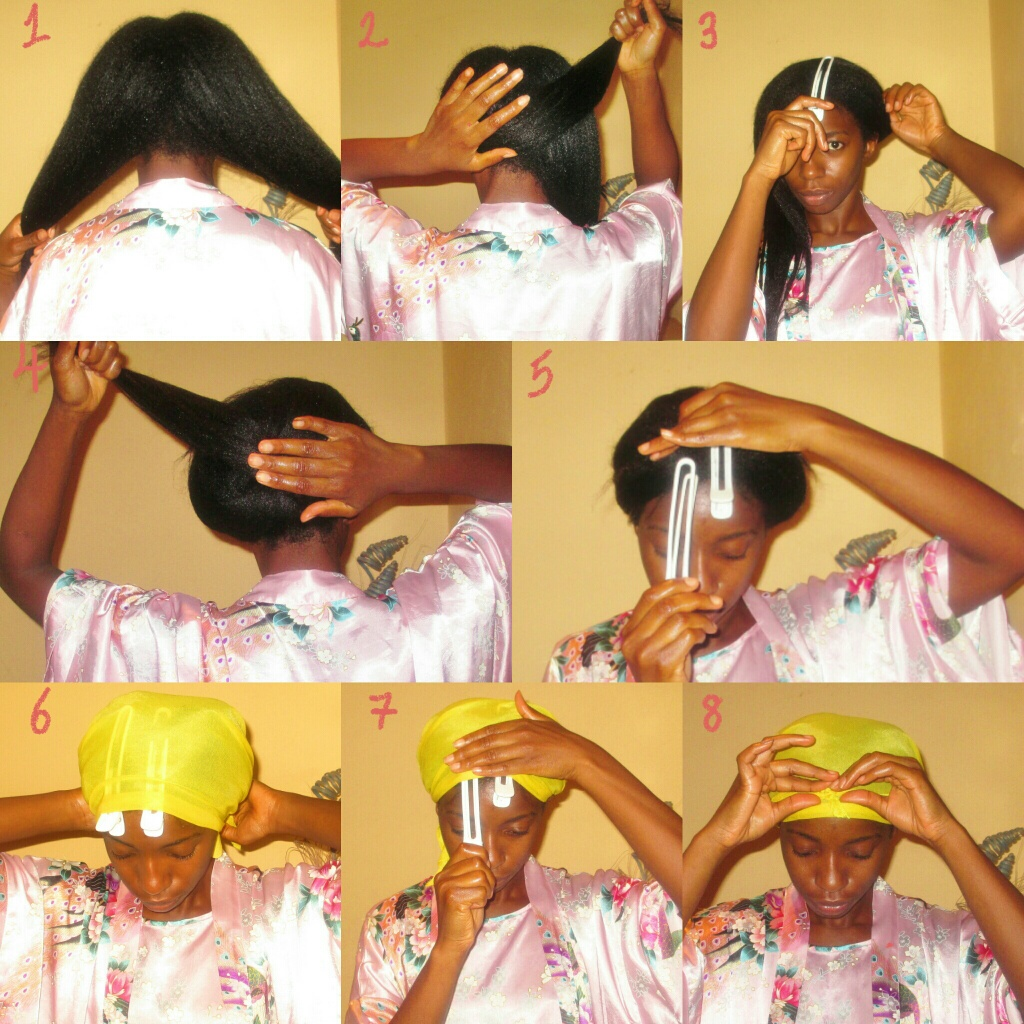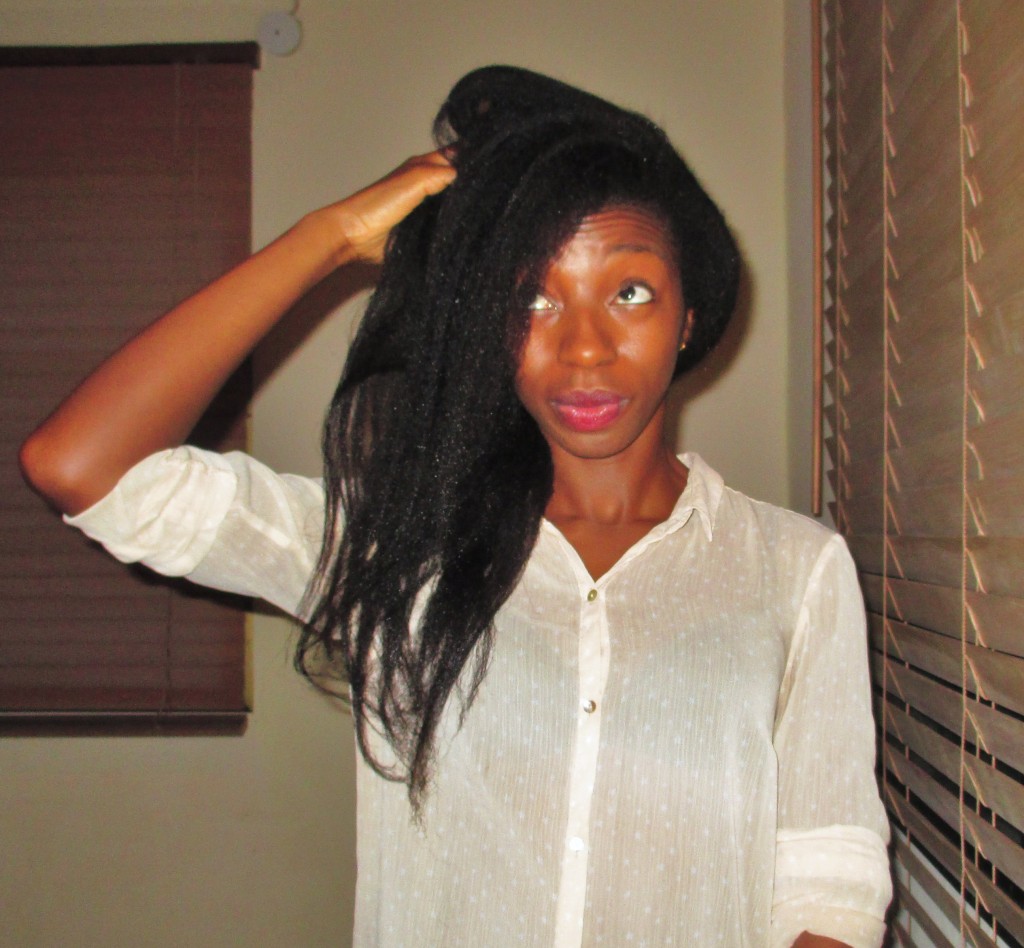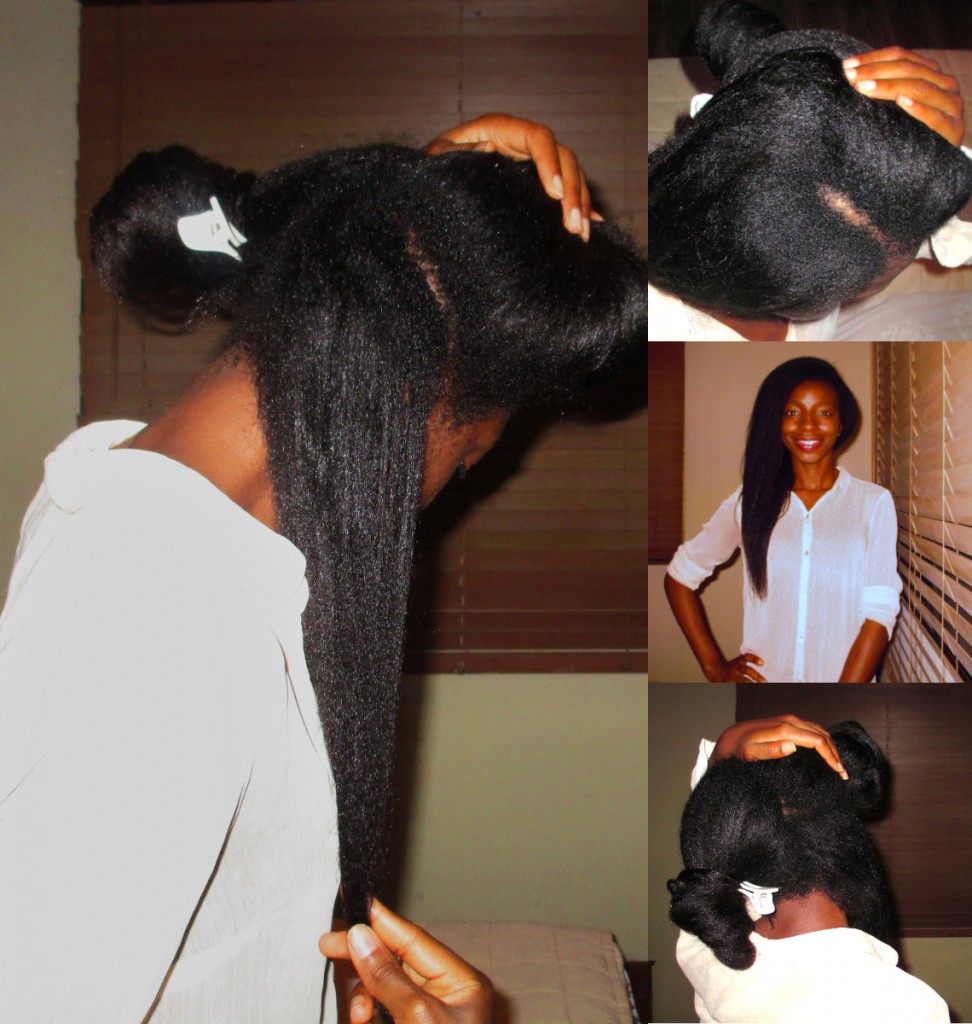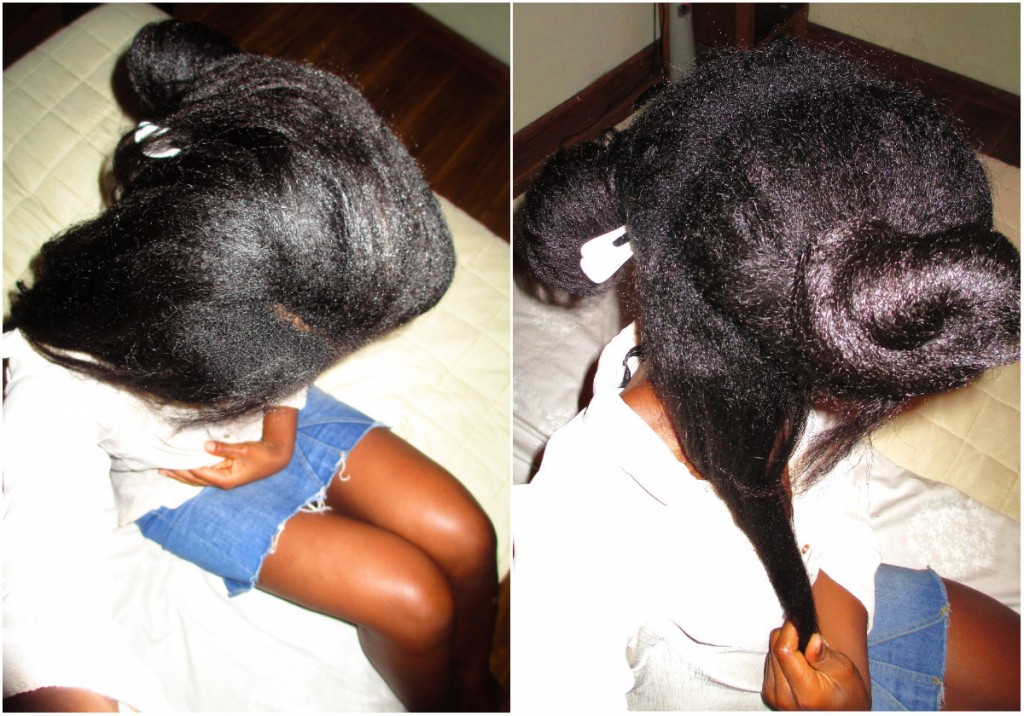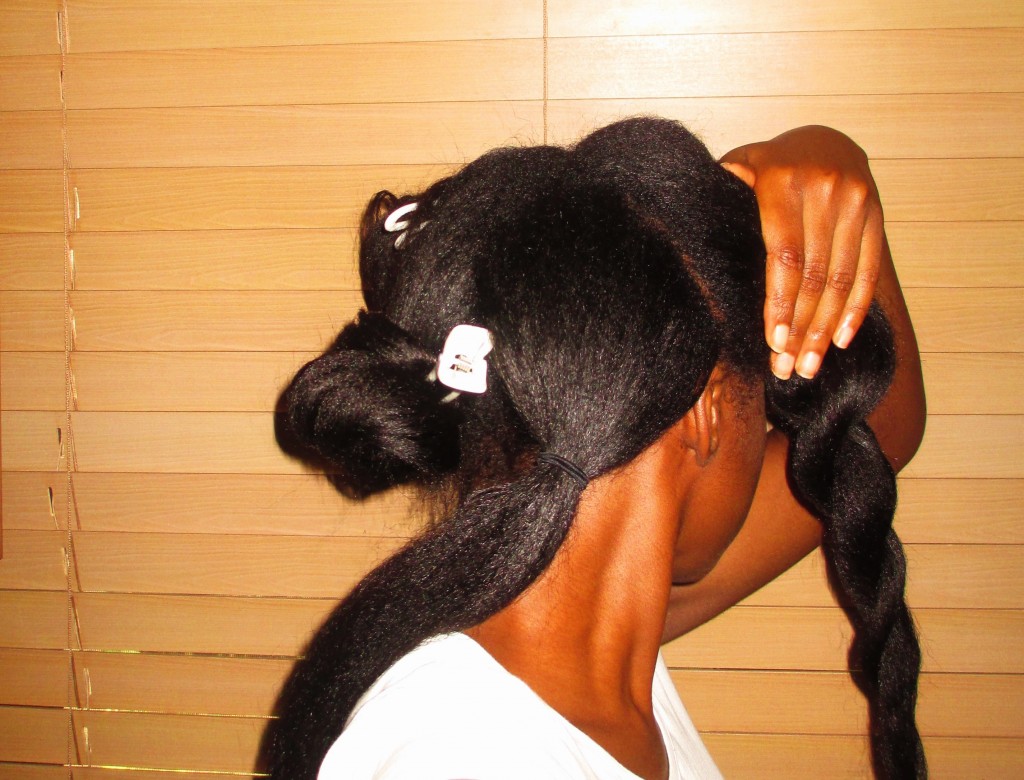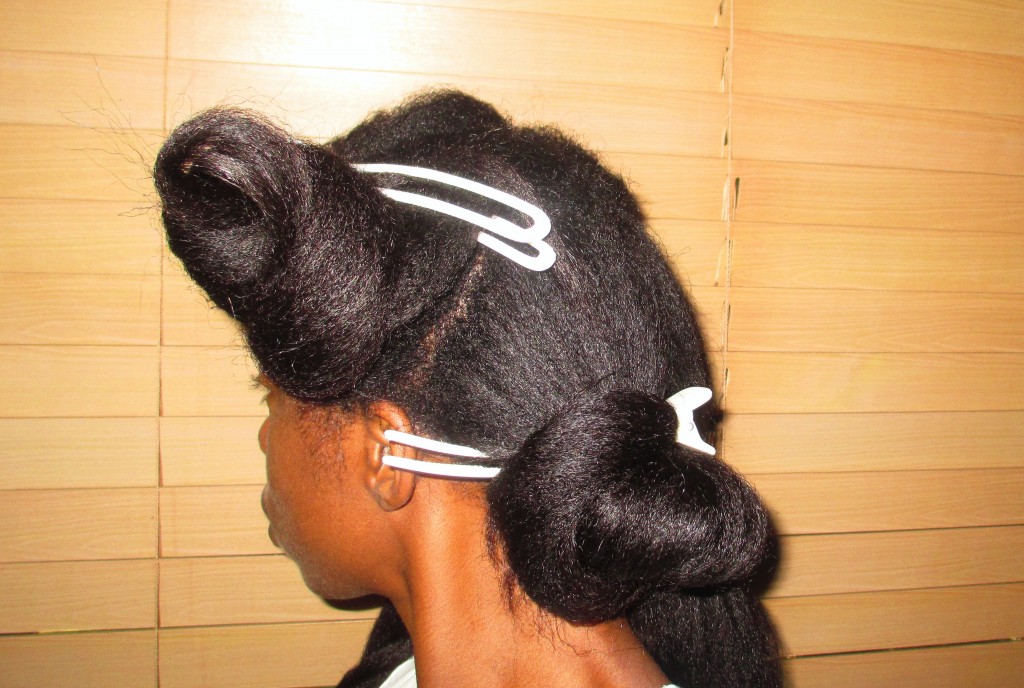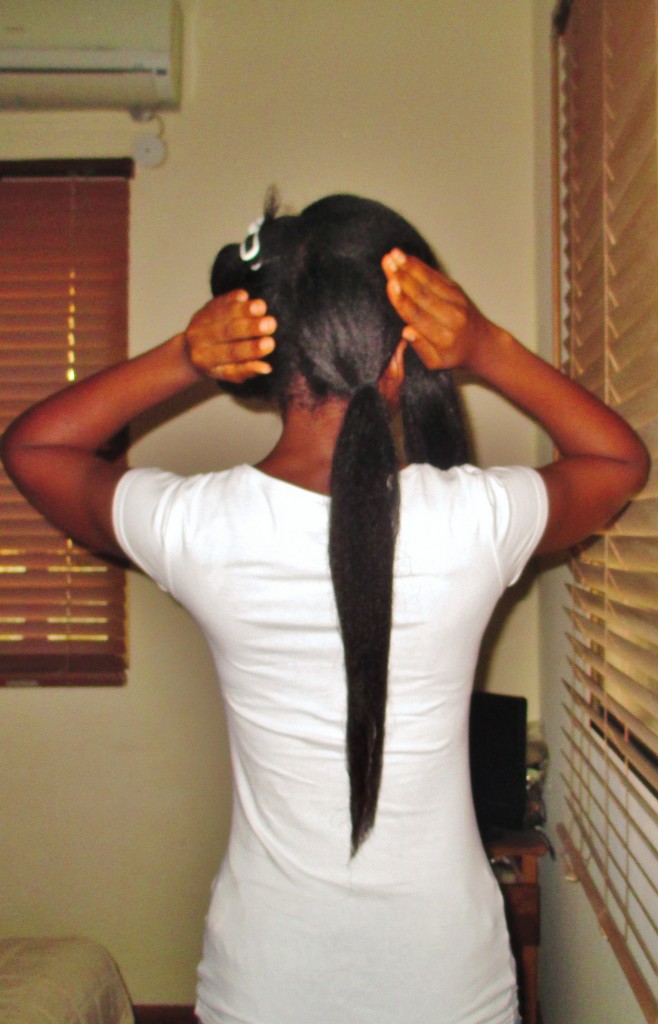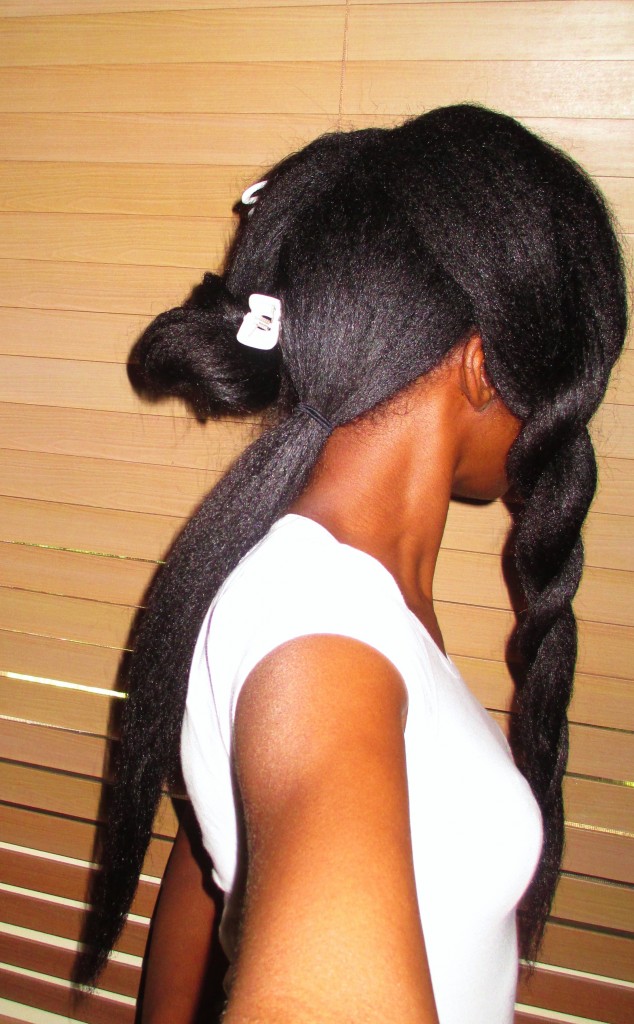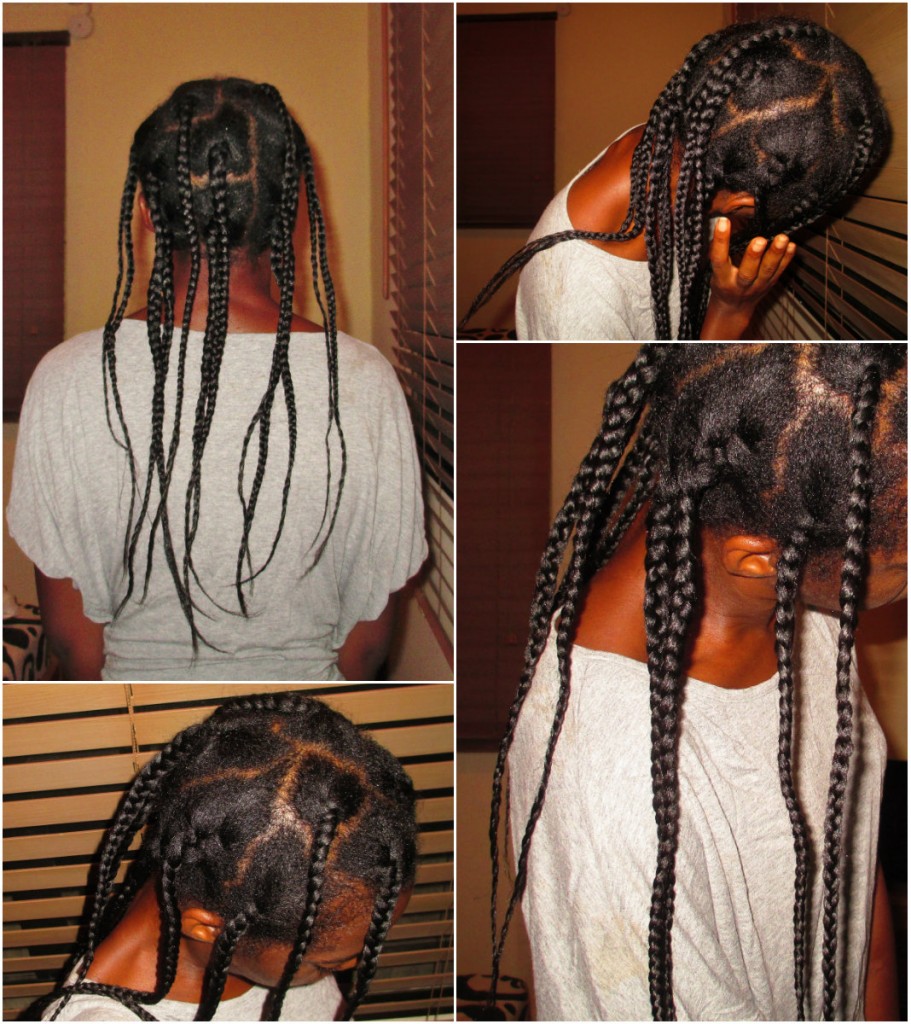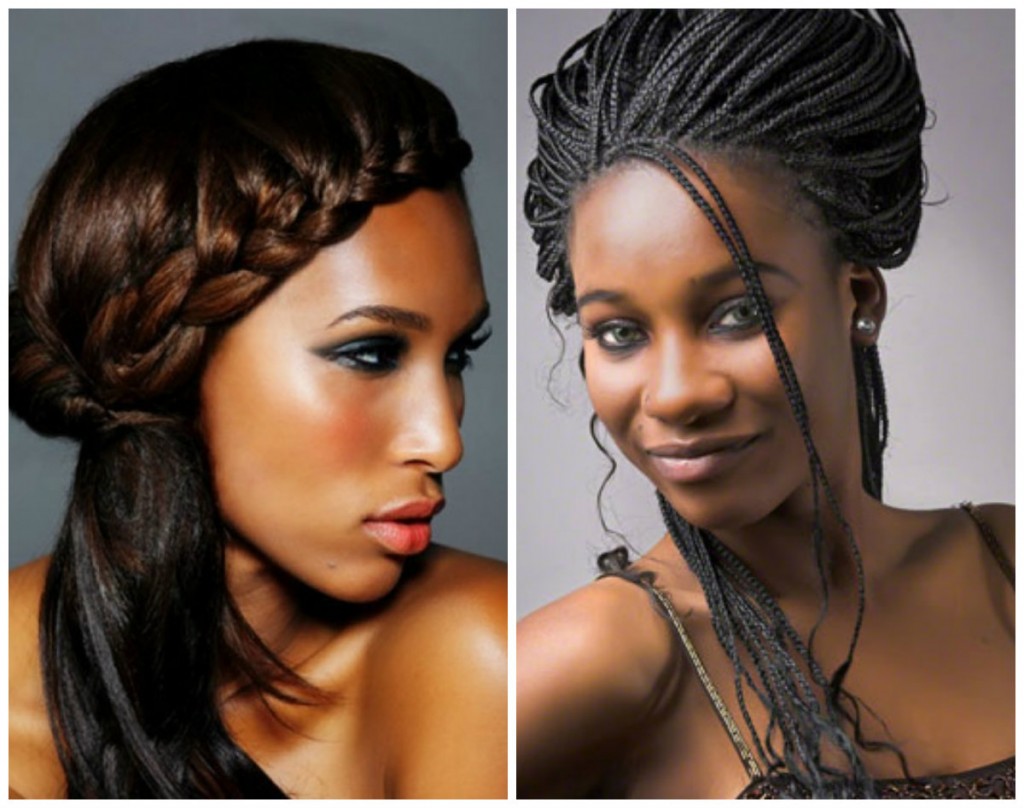
Weaves and braids can be great protective styles however access to your own hair is restricted. This makes it difficult to care for your own hair underneath or within the extensions. It is essential however that you complete some aspects of your hair regimen despite the restricted access.
This blog post will provide guidance on the safe installation of extensions and how to care for your own hair when wearing weaves or braids. I must warn you, it’s a long one. So I suggest you read it over a few days to avoid getting confused or overwhelmed.
Please ensure that you have already read the previous post which addresses the pros and cons extensions. Also please ensure you have read the contents of the How to Care for Black Hair guide.
This guide will help you understand the principles of hair care and how to apply them to your hair when wearing extensions.
WHAT YOU SHOULD DO TO YOUR HAIR BEFORE INSTALLING EXTENSIONS
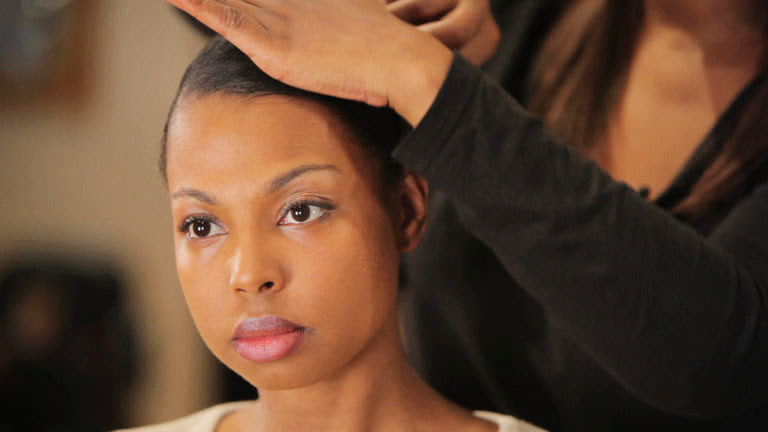
1) Ensure your hair is in good condition before installing a weave or braids.
If your hair is in a poor state I would suggest that you follow a hair regimen until your hair is better and then you can return to wearing weaves as a protective style from time to time.
2) If your hair is in a poor state and you would rather not wear it out, consider wearing wigs which will give you access required to care for your hair until it is in a good state.
3) If your hair is in a good state, ensure that you wash and deep condition your hair before installing the weave. Use a protein deep conditioner to help strengthen your hair in preparation for your install. If your hair is protein sensitive you can use a mixture of protein and moisture.
4) Use a moisturising leave in to help ensure moisture and protein balance.
5) Detangle with your hands and follow with a wide tooth comb.
6) Moisturise and seal your hair lightly. Your hair should feel strong but supple/flexible. It should NOT feel dry and crunchy.
7) Never ever EVER relax your hair and get a weave or braids done the same day. Wait at least two to three weeks before installing braids or weaves.
If for whatever reason you prefer to not wear your hair out during this period remember a wig can be worn.
HOW TO INTALL EXTENSIONS CORRECTLY
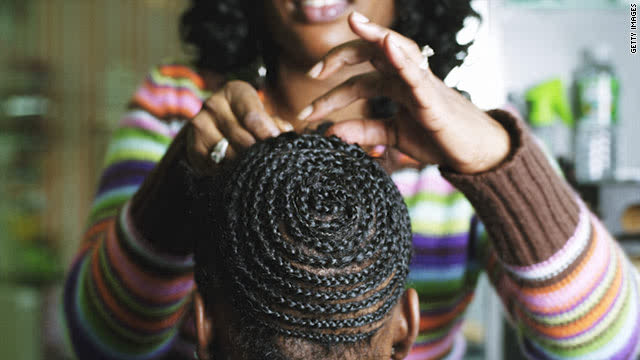
1) Avoid excessive or aggressive combing when the braids or cornrows for the weave are being made. A wide tooth or medium tooth comb should be used to comb the hair.
2) Ensure the cornrows are not excessively tight, small bumps around hair line or white tipped hairs sticking out around the hairline are signs that the braids or weave is too tight. Remember that hair around the hairline is usually very delicate.
3) For weave, as far as possible the hair should be stitched on in a way that allows as much access as possible to the cornrows underneath. This will give you a little access so you can care your hair to some degree whilst wearing the weave.
4) For braids, avoid adding too much extension hair to each section. The weight of the extensions combined with the tightness of the braid may pull out hair and can damage to the hair follicles especially along the hair line.
Remember don’t put a hairstyle above the risk of permanent damage to your hair follicles.
HOW TO INCORPORATE A HAIR REGIMEN WITH WEARING EXTENSIONS
CLEANSING
Research I have done suggests that hair in extensions should be cleansed every two weeks.
There are two methods through which you can cleanse your own hair and scalp when wearing weaves and braids.
Option 1: Diluted Shampoo
Shampoo can be diluted with water and put in a spray bottle or applicator bottle.
The diluted shampoo should be sprayed/applied to the cornrows/tracks for the weave or the base of the braids, massage for a few minutes to create some lather and lift dirt. Rinse thoroughly and wrap in a towel/tshirt to absorb the water.
I must say that when I wore weaves in the past I never cleansed my hair using this method. For me it was like having a bath with clothes on and I was not sure if the extension hair would hold up. I wanted to avoid getting the extensions tangled and matted.
Several ladies however wash their hair with weaves using this method without any problems.
When I wore braids in the past, I washed it using this method.
Option 2: Dry clean
Because I never felt comfortable with washing my hair in weaves I came up with a way to clean my scalp: baby wipes.
I would gently rub my scalp (the spaces between the tracks) with the baby wipes to remove dirt and grease. I did this once a week.
Alternatively, cotton wool pads and very warm to water can be used.
The cotton wool pads should be dipped in the water, squeezed and then used to wipe your scalp gently.
The heat from the cotton wool really helps with lifting dirt and grease from the scalp.
The down side to this method is that although it cleans the scalp it will not clean the hair itself.
I overcame this issue by avoiding the use of heavy creams and lotion on my weave tracks. I used light sprays and light oils instead.
CONDITIONING
There are two methods of conditioning your own hair whilst wearing extensions.
Option 1: Diluted conditioner
Your conditioner can be diluted with water and put into an applicator bottle. It can applied to the cornrows/tracks for the weave or the base of the braids. Ensure you rinse thoroughly and squeeze gently.. A towel or t-shirt can be wrapped on you head to absorb the water. Ensure the weave/braids and your hair dries fully.
Option 2: Leave in conditioning sprays
An alternative method of conditioning is to use a liquid leave in conditioning spray. These are usually very light and do not leave too much product residue on the hair. This is the method I used when I wore weaves and braids in the past.
The spray should be aimed at the tracks of the weave because this is where your own hair is. For braids, the length and base can be sprayed lightly. Ensure your hair and the extensions dries fully.
Please see the picture below showing examples of leave in moisturising sprays. The product in the middle is a detangler but this particular detangler is also a fantastic hair mist that I highly recommend. Please note that the product to the right (CHI) is a protein product so should not be used excessively.
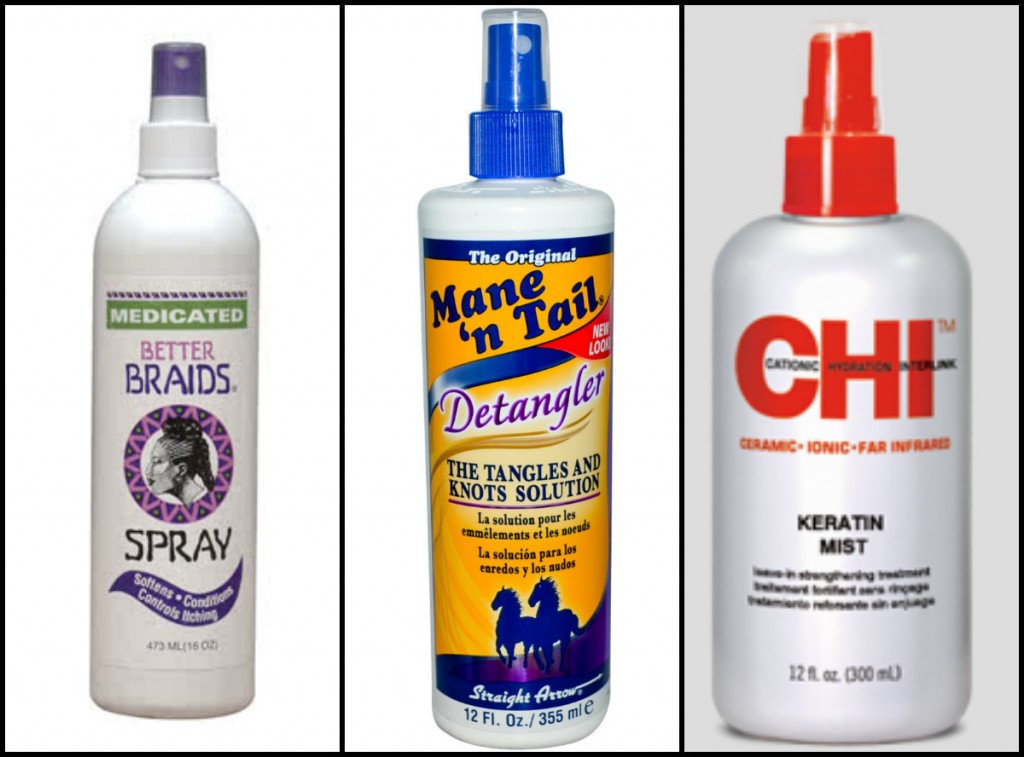
MOISTURISING AND SEALING
Moisturising
A moisturising spray can be used to hydrate the tracks of the weave or the braids.
The spray can be used three or four times a week, do not over saturate the hair, just a light misting to prevent chronic dryness. The use of moisturising creams and lotions is not ideal because they can leave a lot of residue on your hair. Product residue may cause matting because you may not be able to cleanse your hair thoroughly due to restricted access.
Sealing
A light oil such as coconut oil or jojoba oil can be applied to the scalp and massaged in. Massaging the scalp regularly will encourage blood flow to the hair follicles and helps to keep the scalp pliable. This may be done once or twice a week. A very small amount of oil should be used to prevent the oil running into the weave hair making it look stringy and greasy.
OTHER USEFUL INFORMATION
1) I would suggest that you keep your weave/braids in for one month minimum and two to three months maximum.
There is a lot of manipulation involved in creating a weave and getting new weave/braids put in every two/three weeks will be very strenuous on your hair. Leaving the extensions in for over two to three months may lead to your hair matting within the braids or underneath the weave. Matted hair is very difficult to untangle and will likely lead to breakage.
2) For weaves, if you have left some of your hair to blend with your weave, try to continue your regular regimen on the hair that has been left out. Try to wash and condition the hair left out once a week.
I know!!!!!!!!!
This blog post has been quite long but I do hope you have found it to be a worthwhile read.
Please stay tuned for the third and final part of this series in which I will share what should be done to your hair after removing extensions. This will also include the highly demanded how to wash your hair in braids/calabar guide.
Till then I hope you Learn | Change | Grow
x
Lade
